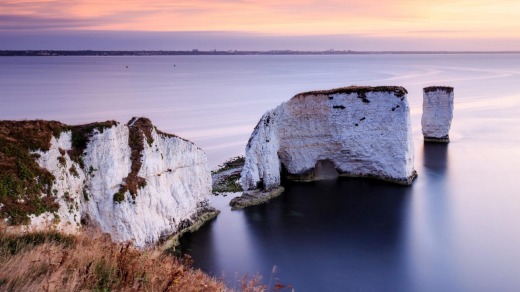
It is the kind of jigsaw-puzzle perfect English countryside vista that makes Dorset such a rustic treat to ramble round. Tumbling towards a dramatic coastline characterised by its vertigo-inducing cliffs, the undulating patchwork of fields are alive with mooing cows and bleating sheep, who graze amid lush pastures speckled with golden bales of hay, a blaze of buttercups, dandelions and daisies and the odd aromatic pile of manure. Stone farmhouses, thatched cottages and ivy-draped inns add to the idyllic scene; one you could almost picture Bathsheba Everdene, Gabriel Oak, Tess Durbeyfield – or the myriad other creations of Thomas Hardy – milling about in.
I say almost, because, in Hardy's day (1840-1928), you wouldn't have stumbled across Lycra-clad cyclists or grinning walkers taking selfies, like I just have. Yet these flashes of modernity can't dent the timeless aura that saturates so much of this quintessentially rural county, which is only two hours from London's (at times) maddening crowds.
I've come to lovely Dorset to get away from it all; inspired by the new cinematic adaptation of Far From the Madding Crowd, David "One Day" Nicholls' hearty revamp of Hardy's 1874 original. Largely filmed in Dorset, and starring Carey Mulligan as Bathsheba, the movie flaunts both the pastoral landscapes synonymous with Wessex – the "partly real, partly dream country" of Hardy's works – and the breathtaking Jurassic Coast, whose spectacular geological qualities have made it England's only natural UNESCO World Heritage Site. Rimming most of Dorset, and dipping into neighbouring East Devon, this 150-kilometre stretch of coastline takes visitors on a geological stroll through time, with its rocks covering 185 million years of the dinosaur-dominated Mesozoic era (the Triassic, Jurassic and early Cretaceous periods).
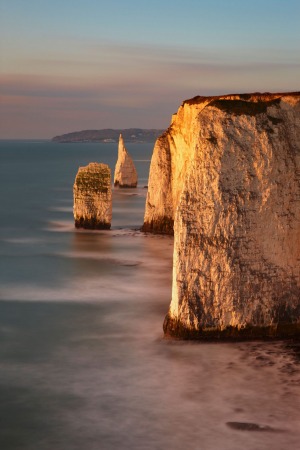
A slew of factors – including massive earth movements, continental drift, changes in sea level and epic erosion – have contributed to the ever-changing appearance of a coastline famed for its eye-catching rock formations and extraordinary discoveries. Ever since Mary Anning, the so-called "princess of paleontology", first started foraging here, as an 11-year-old, in the early 1800s, fossil hunters have descended on Dorset to unearth relics of the prehistoric giants who roamed its once desert-like landscapes, crocodile-infested swamps and balmy, tropical seas.
I start my Jurassic Coast adventure at its most easterly point. Now lapped by the chilly, aquamarine waters of the English Channel, Old Harry Rocks are stark white stacks anchored off Swanage (which, like most Dorset seaside towns, possesses some quaint old pubs, fish and chipperies, bucket and spade shops, eclectic boutiques, art galleries and trendy restaurants whose menus proudly trumpet locally sourced seafood, meat and dairy products). Dating back 90 million years, made from the compressed remains of tiny sea creatures, the chalky rocks are said to be named after Harry Paye, a revered Dorset pirate who led raids into French and Spanish territory in the early 15th century (capturing ships laden with olive oil, wine and jewels).
Just as dazzling as the rocks are the cliffs facing them. They're so huge and steep that the hikers treading the rolling, rugged clifftop trails resemble tiny match-stick figures. It's possible to cover the Jurassic Coast entirely on foot, as it's skirted by the South West Coast Path (a gem of a trail that courses 1000 kilometres through south-western England, and is peppered with camp sites, caravan parks, B&Bs and boutique hotels). I opt to drive along the Jurassic's winding country lanes and walk short, scenic sections of a trail that's pockmarked not just with prehistoric relics, but those drenched in mining, military and maritime history.
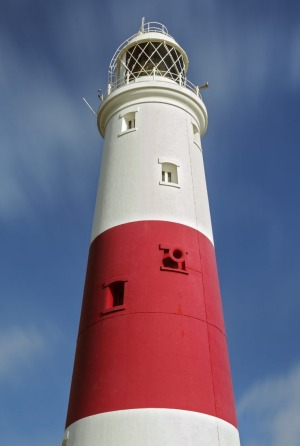
From the hamlet of Worth Matravers, seven kilometres from Swanage, I do a loop that carves through a dairy farm and wildflower-rich fields towards St Aldhelm's Head, a remote, wave-lashed promontory with a tiny Norman chapel and a former navy-outpost-turned coastguard lookout. Inhaling the salty sea air, I glean tales of shipwrecks and smuggling from the trail information board, as a rabbit hares past and birdlife flutters and squawks above my head (nesting seabirds, like razorbills, kittiwakes and cormorants, are regularly sighted here).
Another wonderfully invigorating walk is the three-kilometre route between Lulworth Cove, a shallow turquoise bay edged by blowholes, caves and an informative visitor centre, and Durdle Door, a picture-postcard arch which kayakers are gliding through when I peer down from the clifftop. The Isle of Portland is another rewarding stop. Just off Weymouth, with whom it co-hosted the 2012 Olympics sailing events, this quarry-riddled isle is renowned for its Tudor castle (built by King Henry VIII), its red-and-white striped lighthouse and, most of all, for its limestone. The British Museum and St Paul's Cathedral are among the notable buildings constructed with this, one of five dominant rock-types found along the coast.
From Portland, you can savour jaw-dropping views of Chesil Beach, a sweeping 30-kilometre barrier of shingle formed over the past 10,000 years (and which acted as the backdrop to Ian McEwan's 2007 novel, On Chesil Beach). Further west, the sheer golden sandstone cliffs of West Bay have attained global fame thanks to Broadchurch, the hit ABC murder-mystery starring David Tennant (and Australian Simone McAullay as the local hotelier). The cliffs also appeared in the new Far From the Madding Crowd (when Gabriel's sheep went atumbling).

On a clear day, the coast's loftiest point, the 191-metre high Golden Cap, is a terrific photo stop. It looms about halfway between West Bay and Lyme Regis, arguably Dorset's most beguiling base. Boasting eminently strollable sea walls, a curving man-made harbour (known as The Cobb), and a cluster of smart boutiques and cafes, Lyme is also a treat for budding paleontologists. Lamp-posts are shaped like ammonites (an extinct mollusc that thrived in the Mesozoic era), galleries are stuffed with dinosaur-related art, and guided fossil walks and talks are run by Lyme Regis Museum. Situated on the site of Mary Anning's birthplace, it contains numerous awe-inspiring finds, including the two-metre long skull of an ichthyosaur (carnivorous marine reptile) that Mary and her brother extracted from the town's cliffs in 1811.
The museum also highlights the literary links of this once popular Georgian bathing resort, in which Jane Austen holidayed, and partially set Persuasion. John Fowles, a former curator of the museum, weaved Lyme's geological heritage into The French Lieutenant's Woman, a novel adapted into a 1981 film starring Jeremy Irons and Meryl Streep. Literary Lyme Walking Tours cover sites featured in Fowles' story, including the Undercliff, a birdlife-rich nature reserve that's been shaped by a series of landslips. It stretches into Devon, and the Jurassic Coast's oldest and most westerly section. Not for the first time on this road trip, the mind boggles when I glimpse the desert-red sea stacks of Ladram Bay and the cliffs of Orcombe Point. Said to be 250 million years old, they hark back to the Triassic period, the dawn of the dinosaurs, when this magnificent coast nestled at the arid centre of the super-continent of Pangaea.
A former Roman garrison, this bustling market town doubled up as Casterbridge in Thomas Hardy's Wessex books. Don't miss its Dorset County Museum, whose diverse collection includes Iron Age finds, gorgeous landscape paintings and incredible fossils, such as the skull and jaws of a pliosaur, the largest marine reptile that ever lived. A Hardy section contains a recreation of his study and showcases costumes that Carey Mulligan wore in Far From the Madding Crowd; dorsetcountymuseum.org
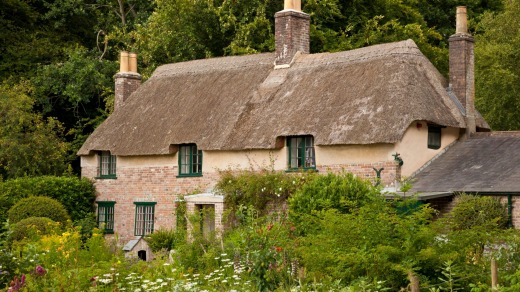
Hidden in an enchanting wood in Higher Bockingham, just outside Dorchester, is Hardy's thatched cottage birthplace, where he wrote some of his early stories (including Under the Greenwood Tree). Also worth visiting in Hardy Country is Max Gate, the red-brick mansion he built after becoming a successful author, and Stinsford parish church. Hardy's heart is buried here, in the grave of his first wife, Emma; nationaltrust.org.uk/hardys-cottage.
An enigmatic soldier, explorer and writer, T. E. Lawrence loved Dorset. Comprising country lanes, leafy woodland and heathland, the circular Lawrence of Arabia Trail takes in places associated with him, including Clouds Hill, his isolated cottage, and Moreton cemetery, where he was laid to rest, aged 46, after a fatal motorcycle accident; nationaltrust.org.uk/clouds-hill.
Indulge your imagination by gallivanting around the evocative ruins of this once-formidable fortress, which crowns a hill overlooking a pretty village of the same name. Built by King Henry I, Corfe Castle was a royal stronghold for five centuries before being sacked by Parliamentarians during the English Civil War; nationaltrust.org.uk/corfe-castle.
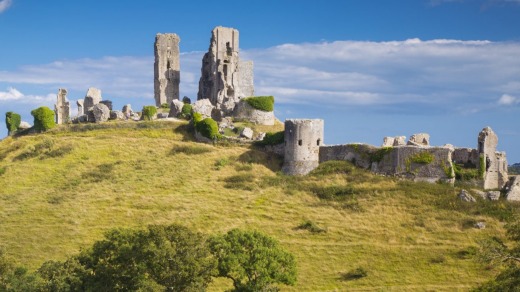
This parish is inextricably linked with the Tolpuddle Martyrs, a group of rebellious farm labourers imprisoned and sent to Australia for taking an oath of secrecy – an illegal act in early 19th century Britain. You can see the 300-year-old sycamore tree, under which they fraternised, and learn more about their fight against pay cuts and poor working conditions in Tolpuddle's museum; tolpuddlemartyrs.org.uk.
visitbritain.com, visit-dorset.com, jurassiccoast.org, literarylyme.co.uk
South West Coast Path: southwestcoastpath.com
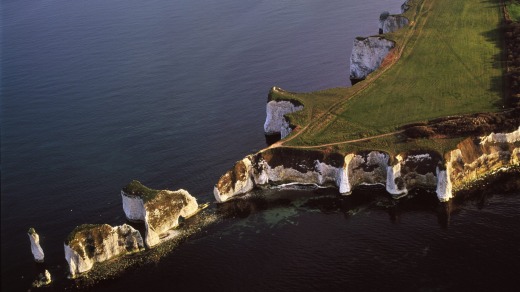
Trains head to Bournemouth, in Dorset, from London Waterloo every 30 minutes, taking about one hour 45 minutes. Europcar has branches in both Bournemouth and Exeter, in east Devon, where you can drop off a hire car and rail it back to London; southwesttrains.co.uk.
Occupying an 18th century stone farmhouse and its converted outbuildings, Kingston Country Courtyard is situated between Corfe Castle and Swanage. Double rooms are priced from £120 ($235); kingstoncountrycourtyard.com.
Dorchester's Wessex Royale Hotel occupies a former Georgian coaching inn. Rooms from £95 ($186); wessexroyalehotel.co.uk
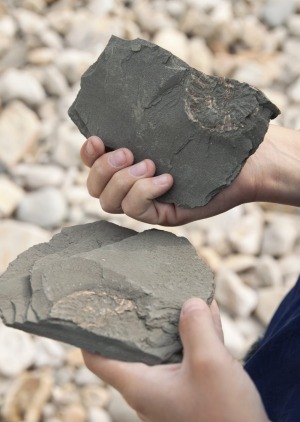
Set in an old country manor surrounded by lush meadows, within walking distance of Old Harry Rocks, the stylish Pig on the Beach has rooms from £129 ($253); thepighotel.com.
The Bull Hotel is a neat choice in charming Bridport, next to West Bay. Double rooms from £100 ($196); thebullhotel.co.uk.